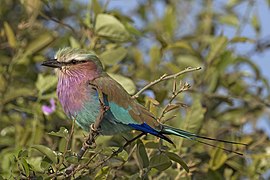| Label
|
Criteria
|
Reader's experience
|
Editor's experience
|
 FA FA
{{FA-Class}}
|
Reserved exclusively for articles that have received "Featured article" status after peer review, and meet the current criteria for featured articles.
|
Definitive. Outstanding, thorough article; a great source for encyclopedic information.
|
No further editing necessary, unless new published information has come to light.
|
 A A
{{A-Class}}
|
Provides a well-written, reasonably clear and complete description of the topic, as described in How to write a great article. It should be of a length suitable for the subject, with a well-written introduction and an appropriate series of headings to break up the content. It should have sufficient external literature references, preferably from the "hard" (peer-reviewed where appropriate) literature rather than websites. Should be well illustrated, with no copyright problems. At the stage where it could at least be considered for featured article status, corresponds to the "Wikipedia 1.0" standard.
|
Very useful to readers. A fairly complete treatment of the subject. A non-expert in the subject matter would typically find nothing wanting. May miss a few relevant points.
|
Minor edits and adjustments would improve the article, particularly if brought to bear by a subject-matter expert. In particular, issues of breadth, completeness, and balance may need work. Peer-review would be helpful at this stage.
|
 GA GA
{{GA-Class}}
|
The article has passed through the Good article nomination process and been granted GA status, meeting the good article standards. This should be used for articles that still need some work to reach featured article standards, but that are otherwise good. Good articles that may succeed in FAC should be considered A-Class articles, but being a Good article is not a requirement for A-Class.
|
Useful to nearly all readers. A good treatment of the subject. No obvious problems, gaps, excessive information. Adequate for most purposes, but other encyclopedias could do a better job.
|
Some editing will clearly be helpful, but not necessary for a good reader experience. If the article is not already fully wikified, now is the time.
|
B
{{B-Class}}
|
Has several of the elements described in "start", usually a majority of the material needed for a completed article. Nonetheless, it has significant gaps or missing elements or references, needs substantial editing for English language usage and/or clarity, balance of content, or contains other policy problems such as copyright, NPOV or NOR. With NPOV a well written B-class may correspond to the "Wikipedia 0.5" or "usable" standard. Articles that are close to GA status but don't meet the Good article criteria should be B- or Start-class articles.
|
Useful to many, but not all, readers. A casual reader flipping through articles would feel that they generally understood the topic, but a serious student or researcher trying to use the material would have trouble doing so, or would risk error in derivative work.
|
Considerable editing is still needed, including filling in some important gaps or correcting significant policy errors. Articles for which cleanup is needed will typically have this designation to start with.
|
Start
{{Start-Class}}
|
The article has a meaningful amount of good content, but it is still weak in many areas, and may lack a table. For example an article on Queen Elizabeth might cover her personality well, but be weak on back story. Has at least one serious element of gathered materials, including any one of the following:
- a particularly useful picture or graphic
- multiple links that help explain or illustrate the topic
- a subheading that fully treats an element of the topic
- multiple subheadings that indicate material that could be added to complete the article
|
Not useless. Some readers will find what they are looking for, but most will not. Most articles in this category have the look of an article "under construction" and a reader genuinely interested in the topic is likely to seek additional information elsewhere.
|
Substantial/major editing is needed, most material for a complete article needs to be added. This article usually isn't even good enough for a cleanup tag: it still needs to be built.
|
Stub
{{Stub-Class}}
|
The article is either a very short article or a rough collection of information that will need much work to bring it to A-Class level. It is usually very short, but can be of any length if the material is irrelevant or incomprehensible.
|
May be useless to a reader only passingly familiar with the term. Possibly useful to someone who has no idea what the term meant. At best a brief, informed dictionary definition.
|
Any editing or additional material can be helpful.
|
Needed
{{Needed-Class}}
|
The article does not exist and needs to be created.
|
|
|




